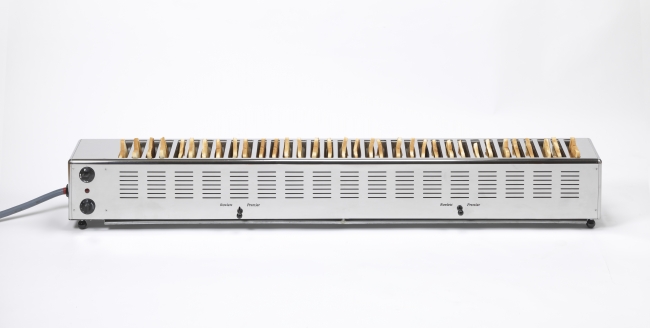Tony Lockhart
Avoiding Stress, at Every Opportunity
One advantage of hard water, apart from tasting better, is that it leaves a nice protective layer of lime scale inside the kettle which insulates you from all that nasty, reactive plastic.
One advantage of hard water, apart from tasting better, is that it leaves a nice protective layer of lime scale inside the kettle which insulates you from all that nasty, reactive plastic.
Can you cook pork chops in it?I presume it is just a particulate filter? carbon?
shouldn't stop the k boiling?
Rowlett toaster here.

You jest, but this is a known factor in lead piping for plumbing. The water suppliers ahve carried out a phased replacement on public supply pipes, starting with those in acid water areas because these are the ones where the lead dissolves into the water. Hard water areas deposit lime inside the pipes, it is actually a visible white film. and this protects the lead. Of course older houses still have lead pipes.One advantage of hard water, apart from tasting better, is that it leaves a nice protective layer of lime scale inside the kettle which insulates you from all that nasty, reactive plastic.
One advantage of hard water, apart from tasting better, is that it leaves a nice protective layer of lime scale inside the kettle which insulates you from all that nasty, reactive plastic.
Stop dead flies getting in your teapot.
16 years and counting on our dualit toaster.
It's gonna die now though
I once cooked a Mattersons sausage in it's bag in a kettle in a travel lodge to make a hot dog when everywhere to eat was shut, I did rinse out the kettle afterwardsCan you cook pork chops in it?
Good luck stay safe.
sadly not, have you seen the size of the plastic those poor things end up eating! This will be so minuscule we wouldn’t even notice and will probably pass through us without doing anywhere near as much harm
Or maybe not.
https://www.theguardian.com/environment/2020/aug/17/microplastic-particles-discovered-in-human-organs#:~:text=People are also known to,traces of plastic in tissue.
It probably mixes well with the Teflon inside our tissues. Funny how Teflon is non stick yet it sticks to our bodies, though maybe not the right choice of word.
Teflon, it turns out, gets its nonstick properties from a toxic, nearly indestructible chemical called pfoa, or perfluorooctanoic acid. Used in thousands of products from cookware to kids’ pajamas to takeout coffee cups, pfoa is a likely human carcinogen, according to a science panel commissioned by the Environmental Protection Agency. It shows up in dolphins off the Florida coast and polar bears in the Arctic; it is present, according to a range of studies, in the bloodstream of almost every American—and even in newborns (where it may be associated with decreased birth weight and head circumference).
I realize you’re kidding but lime scale makes kettles louder, IME. Descaling with sodium bicarbonate fixes it.One advantage of hard water, apart from tasting better, is that it leaves a nice protective layer of lime scale inside the kettle which insulates you from all that nasty, reactive plastic.
